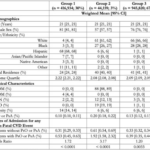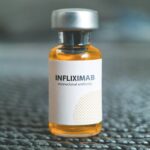New clinical features, opinion pieces and much more—outgoing Arthritis & Rheumatology Editor-in-Chief Daniel H. Solomon, MD, MPH, discusses how the journal has evolved and where it’s going.


Leslie Mertz, PhD |
New clinical features, opinion pieces and much more—outgoing Arthritis & Rheumatology Editor-in-Chief Daniel H. Solomon, MD, MPH, discusses how the journal has evolved and where it’s going.
Research from Baker et al. demonstrated a strong association between the presence of metabolic syndrome and lower response rates to advanced therapies in patients with RA.

Katie Robinson |
Peter Nigrovic, MD, provides a practical guide to the diagnosis & treatment of macrophage activation syndrome (MAS) in children & adults.
Brooks et al. evaluated the risk of lung cancer in patients with rheumatoid arthritis (RA) and RA-associated interstitial lung disease (ILD) compared with the risk in matched controls without RA or RA-ILD. Understanding whether RA predisposes someone to lung cancer and whether patients with RA-ILD represent a uniquely high-risk group could inform cancer-screening strategies.

Anurag Goel, Joshua Tanzer & Vinit Gilvaz |
Background/Purpose Psoriasis and psoriatic arthritis (PsA) are closely linked inflammatory conditions that can affect both children and adults. In children, these diseases are associated with traditional cardiovascular disease risk factors and subclinical atherosclerosis. In older adults, systemic inflammation from psoriasis and PsA accelerates atherosclerosis, and these conditions are independent risk factors for severe cardiovascular disease…

Fava et al. investigated longitudinal autoantibody profiles in patients with lupus nephritis (LN) to define serological biomarkers of histologic class. They found that baseline levels of anti-C1q and anti-double-stranded DNA antibodies may serve as noninvasive biomarkers of proliferative LN and anti-C1q antibodies may predict complete response.

Pimentel et al. evaluated the influence of anti-infliximab antibodies on patients with axial spondyloarthritis. The researchers found that anti-infliximab antibodies were associated with decreased infliximab performance and difficulty tapering its dosage, as well as a good clinical response to a second, alternate tumor necrosis factor inhibitor.
Figueroa-Parra et al. set out to evaluate the effect of glucocorticoid regimens on renal response, infections and mortality rates among patients with lupus nephritis (LN). The researchers analyzed the control arms of randomized clinical trials and found a higher exposure to glucocorticoids during the initial treatment of LN was associated with better renal outcomes, at the cost of increased infections and mortality.
Background & Objectives The ORAL Surveillance trial (NCT02092467), a postauthorization safety study of tofacitinib in patients with rheumatoid arthritis (RA) aged 50 years or older with at least one additional cardiovascular risk factor, found a dose-dependent increase in venous thromboembolism (VTE) and pulmonary embolism (PE) events when patients were treated with tofacitinib vs. a tumor…
Mannion et al. set out to describe the adult rheumatology workforce in the U.S. by measuring the number of rheumatologists and advanced practice providers entering and exiting the field and studying their demographics.